Mark Caney's Blog, page 28
March 31, 2014
Japan accepts court ban on Antarctic whaling
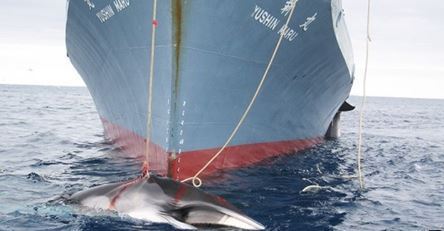 The UN’s International Court of Justice (ICJ) has ruled that the Japanese government must halt its whaling programme in the Antarctic.
The UN’s International Court of Justice (ICJ) has ruled that the Japanese government must halt its whaling programme in the Antarctic.
It agreed with Australia, which brought the case in May 2010, that the programme was not for scientific research as claimed by Tokyo.
Japan said it would abide by the decision but added it “regrets and is deeply disappointed by the decision”.
Australia argued that the programme was commercial whaling in disguise.
The court’s decision is considered legally binding.
Japan had argued that the suit brought by Australia was an attempt to impose its cultural norms on Japan.
Science ‘myth’
Reading out the judgement on Monday, Presiding Judge Peter Tomka said the court had decided, by 12 votes to four, that Japan should withdraw all permits and licenses for whaling in the Antarctic and refrain from issuing any new ones.
It said Japan had caught some 3,600 minke whales since its current programme began in 2005, but the scientific output was limited.
Japan signed up to a moratorium on whaling in 1986, but continued whaling in the north and south Pacific under provisions that allowed for scientific research. Norway and Iceland rejected the provision and continued commercial whaling.
The meat from the slaughtered whales is sold commercially in Japan.
Japan has clashed repeatedly with Australia and some other western countries, which strongly oppose whaling on conservation grounds.
Japan has argued that minke whales and a number of other species are plentiful and that its whaling activities are sustainable.
A spokesman for Greenpeace UK, Willie MacKenzie, welcomed the ICJ’s decision.
“The myth that this hunt was in any way scientific can now be dismissed once and for all,” he said.
Source: BBC

March 28, 2014
Ukraine military dolphins to switch nationalities, join Russian navy
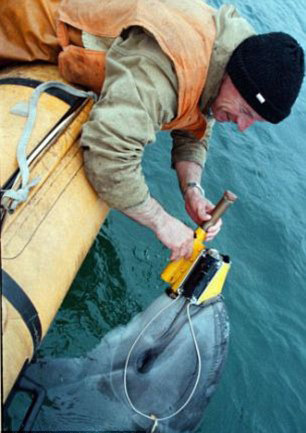 Just when you thought this divorce couldn’t get any messier.
Just when you thought this divorce couldn’t get any messier.
Weeks after Russia annexed Ukraine’s Crimea region, it plans to take custody of dolphins in the nation as well.
Not just any dolphins. These highly trained military mammals detect risks such as sea mines or enemy scuba divers trying to slip through. Sea mines are sophisticated weapons that can sink ships and other watercraft.
“The combat dolphin program in the Crimean city of Sevastopol will be preserved and redirected toward the interests of the Russian navy,” state-run Russian news agency RIA Novosti reported Thursday.
Dolphins are a crucial part of open-water security. They detect sounds and objects in murky waters that human beings can’t, making them uniquely effective at highlighting dangers on the sea floor.
Harnessing the military power of animal intelligence
Ukraine was using outdated military equipment for the dolphin program and planned to disband it next month, RIA Novosti said.
The Ukraine Defense Ministry told CNN that the nation has an ocean dolphin facility but declined to provide details, saying they’re classified.
The dolphin program dates to the 1960s, when Russia and Ukraine were part of the Soviet Union, but was handed over to Kiev after independence, RIA Novosti said.
The U.S. Navy in San Diego also trains dolphins and sea lions to help protect its assets and find dangerous objects underwater.
Tensions between Moscow and Kiev have escalated since Russia reclaimed the Crimea region after a referendum this month that overwhelmingly supported the annexation. The United States and its allies have pledged to isolate Russia for its actions.
Ukraine also has combat sea lions that operate under the same base. It’s unclear whether they’ll be barking allegiances to Moscow or Kiev.
Source: CNN

March 25, 2014
How social behavior affects genetic makeup
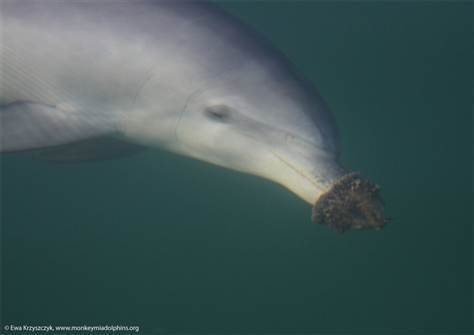 Scientists studying bottlenose dolphins that use sponges as tools to protect their sensitive beaks has shown that social behavior can shape the genetic makeup of an animal population in the wild.
Scientists studying bottlenose dolphins that use sponges as tools to protect their sensitive beaks has shown that social behavior can shape the genetic makeup of an animal population in the wild.The study has been carried out on dolphins in Shark Bay in Western Australia. With many of these bottlenose dolphins, the mammals put conical marine sponges on their rostrums (beaks) when they forage on the sea floor. This is a non-genetic skill that calves apparently learn from their mother.
However, a team of researchers have found that sponging dolphins end up with some genetic similarities because the calves also inherit DNA from their mothers. It is also likely that sponging dolphins are descendants of a female dolphin that first developed the innovation.
Bottlenose dolphins live in groups typically of 10–30 members, called pods, but group size varies from single individuals up to more than 1,000. Their diets consist mainly of forage fish. Dolphins often work as a team to harvest fish schools, but they also hunt individually. Bottlenose dolphins also use sound for communication, including squeaks and whistles emitted from the blowhole and sounds emitted through body language, such as leaping from the water and slapping their tails on the water surface.
Source: Digital Journal

March 19, 2014
Dolphin pod dies trapped in ice off Canadian coast
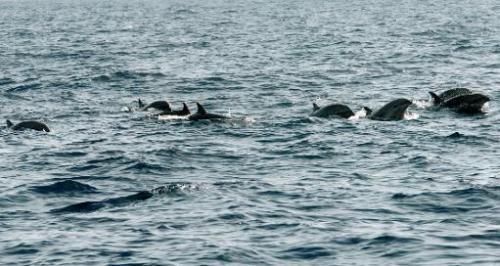
Canadian fisheries officials twice visited the area around Cape Ray, Newfoundland where the animals were reported to have been trapped on Sunday and again Monday morning.
“All but three animals have died,” ministry spokesman Larry Vaters told AFP.
Some 30 white-beaked dolphins have died after being trapped in ice off the coast of Canada’s easternmost Newfoundland province, and three remaining alive are not faring well, officials said Monday.
“The remaining dolphins appear to be in extremely poor condition and current weather conditions of high winds and whiteouts in the area are not helping matters,” he said.
The dolphins would have struggled for air as the ice floes crushed in around them, becoming exhausted and eventually drowning.
It is not uncommon to see dolphins, as well as porpoises and beluga whales swimming in the ice off Newfoundland waters during the spring thaw, officials noted.
The area’s “unique geography and currents” tend to form so-called “whale traps” whenever the ice is heavy, Vaters noted. Six blue whales were driven ashore by ice and died here in 1987.
It is “very unfortunate” when marine animals become trapped in ice, Vaters said. But authorities, except in rare cases, will not intervene to rescue wild animals in distress.
Full story: Phys Org

March 4, 2014
Syrian chemical weapons to be dumped in the Mediterranean
Fourteen countries are helping remove, destroy and dispose of Syria’s massive chemical weapons stockpile, yet none of these countries could agree on where to dispose of the final product. The solution; dump them in the Mediterranean…
The process of decommissioning Syria’s chemical weapons arsenal has begun, with the first batch of the country’s chemicals safely loaded aboard a Danish cargo ship in the northwest Syrian port of Lattakia.
Extracting the hazardous material — precursor chemicals used to produce sarin and mustard gas and a small amount of produced mustard gas, known as ‘priority one’ chemicals — is a complex international effort. The first stage is securely packing the chemicals at 12 sites across Syria, two of which are in the middle of battlefields, and transporting them to the port. This is the responsibility of the Syrian army, which will be guarded en route by armoured trucks provided by Russia.
They are then loaded on to two cargo ships provided by Denmark and Norway, which have also supplied naval vessels to escort the ships out of Syrian waters. Additional security at the port is being provided by Russian forces, while the US has supplied loading and decontamination equipment, China has supplied ambulances, and Finland has supplied an emergency response team in case of accidents.
The Danish cargo ship carrying the first batch of chemicals has now moved back out into international waters to wait for more chemicals to arrive at the port in Lattakia. Once the cargo ship has taken onboard its full consignment it will set sail for an unnamed port in Italy, protected by a flotilla of naval vessels from Denmark, Norway, Russia and China.
When the flotilla arrives at its destination in Italy it will transfer its cargo of priority one checmicals to a US Maritime Administration ship, the MV Cape Ray. Around 150 tonnes of priority two chemicals, toxic material not disimilar to industrial chemical agents, will be transported to the UK with the help of the Royal Navy and destroyed by a commercial company in the UK. The Foreign Office estimates the cost at less than £1 million.
The 648-foot, 22,000-tonne MV Cape Ray will then transport the priority one chemicals out into international waters in the Mediterranean, where US Military personnel will break them down in field stations on the ships’ internal trailer deck. It will be the first time the US military has disposed of chemical weapons at sea.
Read the full story from The Telegraph.
There have been some protest, but it has received little media attention:
Τhe graveyard of highly toxic weapons will be off Crete, west from the Chania prefecture. Reason enough for Cretans in particular and Greek sin general to protest the process claiming environmental reasons. An international petition against the dumping of the Syrian chemicals in the Mediterranean Seas has already been set up in the petition website avaaz.org: – See more at: http://www.keeptalkinggreece.com/2014...
Τhe graveyard of highly toxic weapons will be off Crete, west from the Chania prefecture. Reason enough for Cretans in particular and Greek sin general to protest the process claiming environmental reasons. An international petition against the dumping of the Syrian chemicals in the Mediterranean Seas has already been set up in the petition website avaaz.org:
“Dumping of 800 tonnes of chemical weapons treated with hydrolysis in the Mediterranean will cause serious pollution, environmental degradation and severe threats to public health. It does not respect local societies, international conventions and very valuable ecosystems and marine species present in the area.” (read and sign petition here)
Speaking to defense news website onalert.gr, a Greek official said he couldn’t believe that any scientist at the OPCW would like to poison a broader area among so many countries.
But Greek experts doubt that the hydrolysis method is secure enough.
Full story: Failaka
And here we compare the map above with this one:

February 28, 2014
SeaWorld Dolphin Bites Girl, Prompts PETA Probe Request
The animal-rights group People for Ethical Treatment of Animals has asked the US Department of Agriculture to investigate a report of a dolphin biting a park-goer at SeaWorld of San Antonio, Texas.
PETA said in its request that a 9-year-old girl was bitten by a dolphin on February 22 while she was trying to pet it. SeaWorld’s Dolphin Cove exhibit allows visitors to touch and view the dolphins.
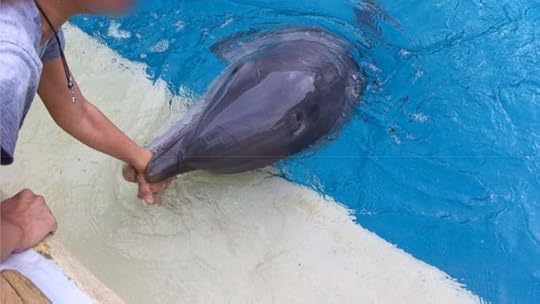 “This incident and exhibit clearly endangered both the dolphin and the public,” said PETA counsel Brittany Peet in the request, which she described as an “apparent Animal Welfare Act violation.” AWA’s 9CFR 2.131 (c)(1) requires “sufficient distance and/or barriers between animal and the general viewing public so as to assure the safety of animals and the public.”
“This incident and exhibit clearly endangered both the dolphin and the public,” said PETA counsel Brittany Peet in the request, which she described as an “apparent Animal Welfare Act violation.” AWA’s 9CFR 2.131 (c)(1) requires “sufficient distance and/or barriers between animal and the general viewing public so as to assure the safety of animals and the public.”SLIDESHOW: WHEN ANIMALS ATTACK
“It’s stressful enough for far-ranging dolphins to be locked up in SeaWorld’s tiny tanks, but forcing them to interact with visitors is downright dangerous,” says general counsel to PETA Jeff Kerr. “SeaWorld’s ‘Dolphin Cove’ is another example of how the park’s main priority is profit, not the welfare of the animals or the safety of its guests.”
David Perle, a PETA spokesman, told ABCNews.com that other children have been bitten by animals at SeaWorld’s parks. “Most recently in December 2012 an 8-year-old girl sustained puncture wounds while hand-feeding a dolphin at SeaWorld Orlando. And many more trainers have been injured and even killed by animals at SeaWorld–the park has more than 100 incidents of Orca aggression in its own incomplete records,” he said.
In her request, Peet said that the girl was petting a dolphin at the park’s Dolphin Cove when it latched onto her hand and wrist so tightly that the child’s mother was unable to free her and a SeaWorld employee had to intervene.
The girl sustained bite marks and swelling to her hand and wrist, PETA said.
PETA declined to put ABCNews.com in touch with the family of the girl, saying that they wish to remain anonymous.
SeaWorld San Antonio spokesman Brian Carter told ABCNews.com that they have not received any word from USDA on the incident. “We [SeaWorld] are fully investigating this incident and we regret the guest experienced this during her visit. SeaWorld provides thousands of safe interactions between our guests and animals each day, and incidents like this are few and far between,” he said. After the incident the girl and her family stayed in the park and visited other attractions.
Carter also said that the SeaWorld staff that was present at Dolphin Cove during the incident responded quickly to assist the guest.
SeaWorld Parks & Entertainment is owned by Blackstone Group and operates parks in Orlando, San Diego and San Antonio.
The USDA didn’t immediately return a request for comment.
Full story and video: abc

February 26, 2014
Scientists believe they’ve solved the mystery of Peru’s dolphin deaths
February 18, 2014
February 17, 2014
Angel in the NY Times
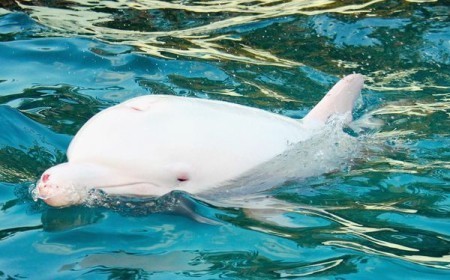
The Dolphin Project recently ran an ad in the New York Times to save Angel, a rare albino dolphin being held captive at Japan’s Taiji Whale Museum.
Angel faces certain death in captivity if she’s not released to a more fitting home. Because her return to the wild is no longer possible since Japanese fishermen killed off Angel’s family, a proposal has been made to send her to a natural seapen or a protected cove.
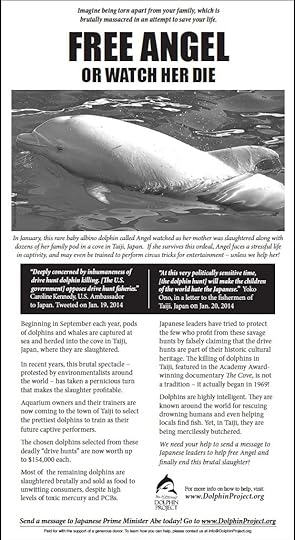 Dolphin Project administrators, led by Ric O’Barry, are calling for the public to send as many letters as possible to Japanese Prime Minister Shinzo Abe, asking him to release Angel and end the Taiji dolphin hunts.
Dolphin Project administrators, led by Ric O’Barry, are calling for the public to send as many letters as possible to Japanese Prime Minister Shinzo Abe, asking him to release Angel and end the Taiji dolphin hunts.
Read more: Dolphin Project

February 13, 2014
Stunning Wild Dolphin and Whale Encounters Captured on Film
Thanks to films like “The Cove” and “Blackfish,” marine animal captivity is finally being addressed on both the national and international levels. The U.S. has seen SeaWorld boycotts take off over the past few months, with musical artists cancelling their SeaWorld “Bands, Brew and BBQ” shows and members of the younger generations standing up to the entertainment giant.
Now, on the international scene, Romania may soon consider a draft law affording dolphins rights of personhood, which would include, among other stipulations, the right to free movement and protection in their natural environment (i.e. no captivity).
All of this news is a sign of a new era unfolding before us — a time when perhaps dolphins and whales will finally be given the protection they so very much need, a time where we might just see these majestic creatures left to carry out their lives how they please instead of being forced into small, concrete pools.
Some in favor of captivity cite its educational benefits and state how “you can’t see these animals anywhere else and by seeing them here you learn to care for the ones out there in the wild.” Yet, this is a poor excuse, as there are real opportunities available to see both whales and dolphins living out their lives in peace right in the wild, their home.
One way is to check out a whale or dolphin watching adventure while another is to take a dive into the deep, blue sea. You may find yourself out of luck on some of these trips, but other times, you might just score the jackpot and have an encounter of a lifetime — an experience that cannot be replicated with captivity.
To inspire you to take the plunge, check out the five videos below featuring some of the most stunning wild dolphin and whale encounters captured on film — truly, breathtaking.
Click here to see the other four clips: One Green Planet


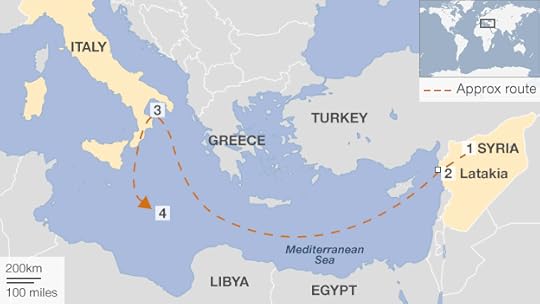
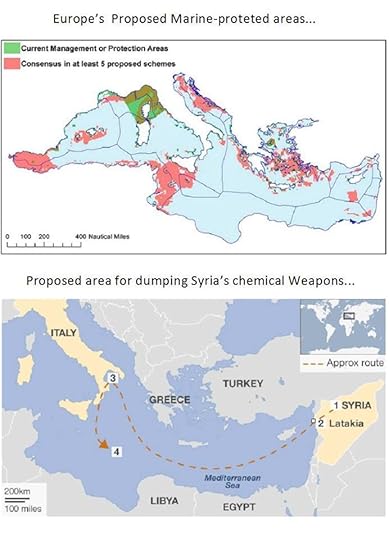
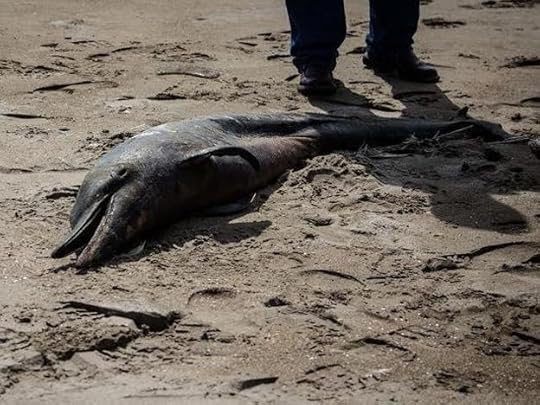 <!--<br />
<!--<br />


